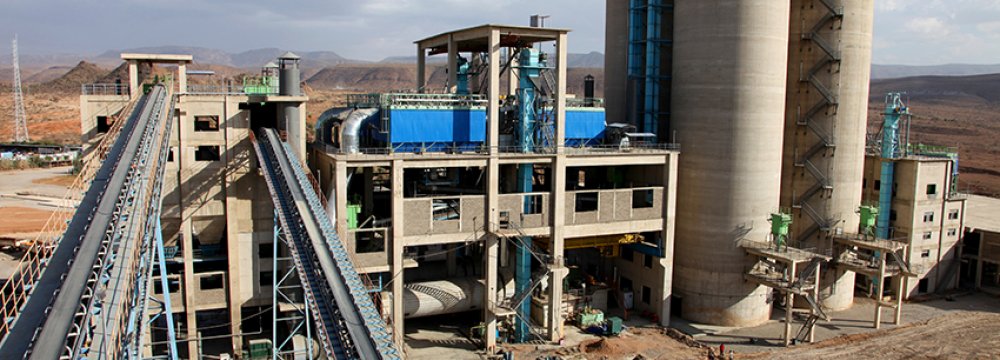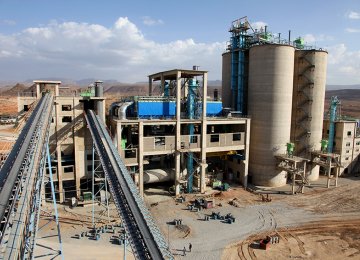Based on negotiations held with officials at the Iran Mercantile Exchange (IME), cement will once again be offered at the IME's export trading floor within the next month, ISNA cited the secretary of the Cement Industry Employers Association, Abdolreza Sheykhan, as saying.
"Cement was supposed to be offered on domestic trading floors this [Iranian calendar] year (started March 21) but after consultation with cement market experts and IME officials, we decided to first offer it on the export trading floor. Upon a successful offering of the product in global markets, we will then be able to extend it to domestic trading floor," Sheykhan said.
Cement manufacturers believe offering products on IME's export trading floor will help increase the prices since there is no price restriction unlike in the domestic market. The absence or presence of cement on the export trading floor has long caused challenges for manufacturers. Although the domestic trading floors have, on numerous occasions, expressed readiness to admit cement, the cement industry seems to be unwilling to do so, preferring to remain on the export trading floor.
The cement industry suffered from recession in the construction sector over the past Iranian year. The manufacturers' attempts to keep offering on the export trading floor comes as domestic producers can be blamed for decrease in prices, as many smaller producers who were not strong enough to enter big markets reduced their prices to be able to compete in the domestic market. Experts believe when the supply exceeds the demand, it is the best time to be listed in the equity market so that equilibrium will be restored in the cement market. This way, the cement prices will no more be set imperatively.
Deputy head of Iran Mercantile Exchange for market development and economic studies, Ali Panahi, had earlier said the IME held numerous meetings with the Inspectorate Organization, cement association and representatives from the ministry of mine, industry and trade in which strategies and solutions were be investigated in order for the cement to enter the commodity market.
“Manufacturers want their products offered on the export trading floor of the IME, counting on markets in Afghanistan, Azerbaijan, and Iraq, in particular”, Panahi noted.
The export trading floor of IME, on the Southern Kish Island in the Persian Gulf, started operation in 2007, trading bitumen and listing other oil-based products on an ongoing basis. According to a resolution passed by the cabinet and the long-term strategies of the government to boost the export of crude oil and petrochemical products in a transparent and lawful market, the IME was mandated to establish the export trading floor. Different oil by-products including bitumen of different grades, sulfur, and chemicals are offered and traded on the export trading floor.
According to Sheykhan, some 18.9 million tons of cement and clinker were exported over the past Iranian year, while 66.4 million tons of cement as well as 70 million tons of clinkers were manufactured during the same period. The products were mainly exported to Iraq, Afghanistan, Pakistan and Africa. During the first month of this Iranian year (ended April 20), more than 1.14 million tons of cement and clinkers were exported, indicating a 2.4% decrease compared to the similar month last year.
The main market for the export trading floor has been predicted to be Iraq, to which white cement and clinker will be exported. Referring to the surplus production of cement in Iran, Sheykhan said the annual domestic production capacity stands at 75 million metric tons, 22 million tons of which can be exported. In domestic markets, cement costs 1 million rials per ton, while it costs $50 (1.42 million rials based on official currency exchange rate) in the international markets, added Sheykhan, urging the sector to develop the export markets. According to the secretary, the major challenge in the sector is to create a balance in export "which could be achieved through the IME".





